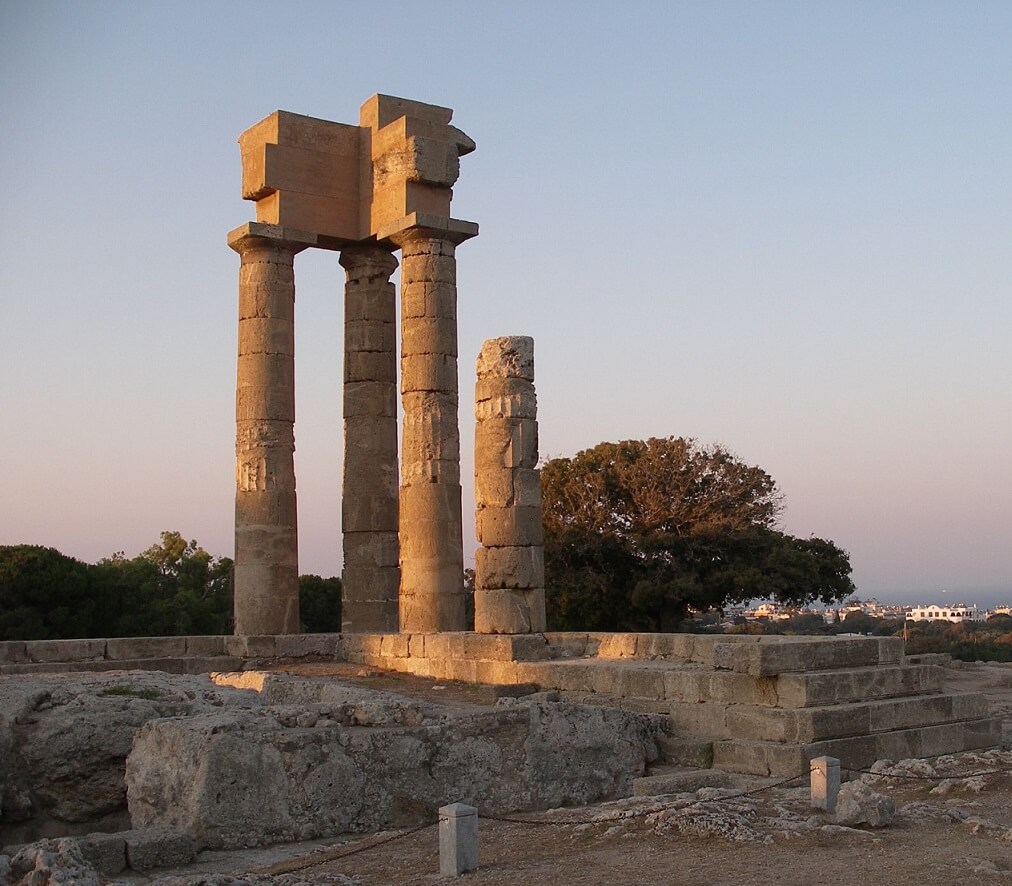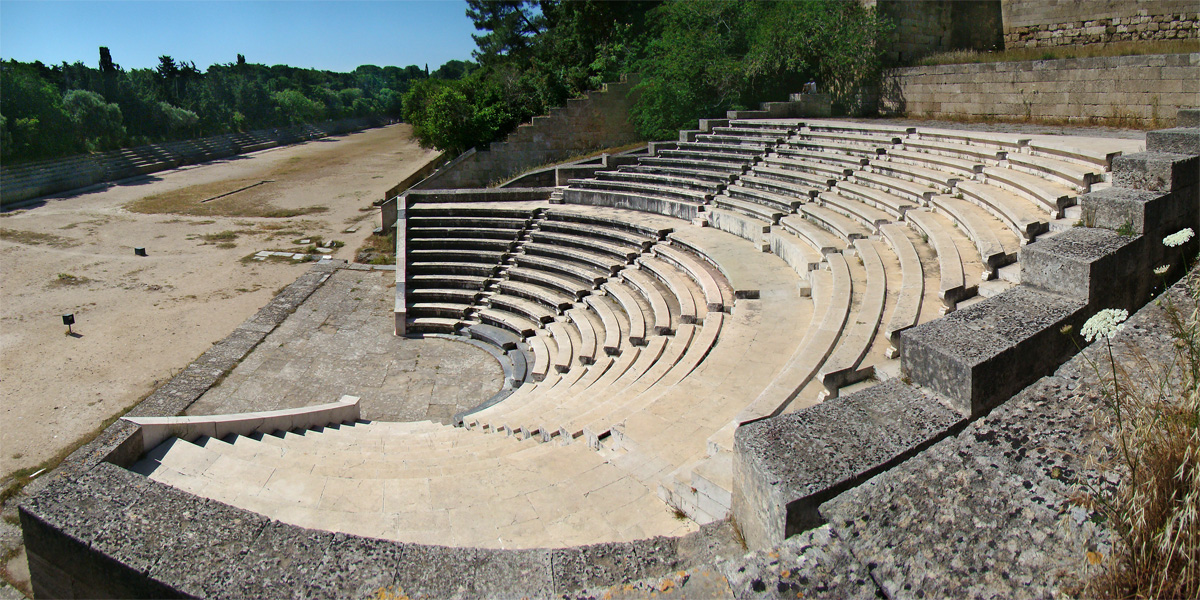
Acropolis of Rhodes

Brief Overview
The Rhodes Acropolis dominated the western and highest part of the city. It was not fortified like most ancient acropolis. It consisted of a monumental zone with Sanctuaries, large temples, public buildings and underground cult places.
The buildings were built on stepped terraces supported by strong retaining walls. It was "full of fields and groves", in the words of the 2nd c. AD orator Ailios Aristides.
The style of the Hellenistic architecture on the Acropolis of Rhodes was perfectly conveyed by the combination of natural beauty and artificial transformations. The buildings on the Acropolis date to the Hellenistic and Late Hellenistic periods (3rd-2nd c. BC).
In Detail
Positioned on the western edge of the city, on the top of the hill of Ayios Stefanos, the Acropolis of Rhodes and its imposing Temple of Apollo, dominates the views. Unlike most of the ancient acropoleis it was not fortified. It consisted of a monumental zone with Sanctuaries, large temples, public buildings and underground cult places.
The ruins that include sanctuaries, public buildings, temples and underground places of cult, are dated to the Hellenistic and Late Hellenistic periods (300 - 200 BC). Built on stepped terraces and supported by strong retaining walls, the Acropolis was "full of fields and groves" in the words of Ailios Aristides, a 2nd c. AD orator.
The first excavations on the site were carried out by the Italian Archaeological School during the years of the Italian occupation of the island (1912-1945).The Temple of Athena was excavated by G. Jacopi in 1926. In 1934 the excavations where carried on under L. Laurenzi.
After the end of the WW II the Greek Archaeological Service started restoration works on the ruins that had suffered considerable damage from the bombing and from the weight of the artillery that had been installed there. From 1946 onwards Greek Archaeologists are conducting a series of excavations, bringing into light important findings regarding the site's history and topography. During the 60's and 70's more reconstruction work was carried out to the west foundation of the Temple of Pythian Apollo. In 1996 further reconstruction was added on the Temple and the Nymphaeums. There is still an on going excavation in the Acropolis archeological park, a protected area that covers an area of 12,500 square meters. As the archeologists say, the current findings represent only a fragment of the glorious past of the ancient city of Rhodes.
The Acropolis of Rhodes is one of the most interesting and enjoyable archeological sites one can visit. Located close to the city and surrounded by a pristine nature with fabulous views, is the favorite jogging and walking place for modern Rhodians. The lower part that includes the large Stadium, is safe for small children.

The main monuments are:
Temple of Pythian Apollo
This stands on the southern part of the hill, on the west side of a large rectangular terrace. It is orientated E-W. It was a poros peripteral temple, but smaller than that of Athena and Zeus. Part of the NE side had been restored with four columns and part of the architrave.
Temple of Athena Polias and Zeus Polieus
Situeted on the northern edge of the Acropolis it is orientated E-W and was a poros Doric peripteral temple (having a columned portico on all four sides). Four oversize column drums and parts of a capital and architrave still to be seen on the site are an indication of its original monumental character. This was where the Rhodians kept the texts of their treaties with other states. The temple stood in a larger temenos bounded by a stoa on the east.
The Nymphaeums
This is to the east and south of the wall of the stoa. It consists of four subterranean cave-like constructions cut into the rock with entrance steps, communicating passages and a large opening in the central part of the roof. There are recesses in the interior walls for statuettes. Water cisterns and lush vegetation complete the picture. They were places for recreation and worship.
Odeion
Northwest of the Stadium is a small restored marble Odeion. It held some 800 spectators and is thought to have been used either for musical events or for attending lessons in rhetoric given by famous Rhodian orators.
Stoa building
Today the foundation wall of a Stoa is preserved, which must have had an imposing facade visible from the lower town and harbour.
Artemision
On the NE side of the same terrace are the ruins of other places of worship, one of which is attributed to the cult of Artemis.
Stadium
The Stadium, with a N-S orientation, is on the SE side of the hill; it was excavated and restored by the Italians. It was one stadion in length, namely 600 feet or 210 metres. The authentic original surviving parts are the sphendone (rounded end with turning post), proedries (seats of officials) and some of the lower seats in the auditorium. Also preserved is the starting mechanism for the athletes. Here athletic competitions were staged as part of the Haleion Games, an important celebration held by the ancient Rhodians in honour of the god Helios.
[1]
Official Website and Map
Further Sources
Our Mobile Application
Check out Our Mobile Application "Ancient Greece Reloaded"


